Characteristic features of the style
When recreating a Scandinavian interior, you should adhere to the following design features:
- Light colors, shades and dark details visually expanding the space.
- Natural materials.
- Visual lightness of furniture, simplicity and severity of lines.
- Practicality, ergonomics and a small amount of decor.
In the photo there is a bright kitchen with snow-white furniture and wood trim.
The Scandinavian style is suitable for both spacious and small kitchens, as well as for rooms with an asymmetric layout.
Choosing the right colors
The Scandinavian style has developed under the influence of the climatic conditions of Sweden, therefore, colors that are close to natural are used in the interior. The basis is light colors: white, gray, beige. The accents are black, graphite and brown.
The photo shows a gray Scandinavian-style kitchen with the addition of black and white details.
Pure colors are almost never found: dusty blue, pistachio, mint and pale lemon are appropriate. Dark blue tones often serve as the backdrop for white headsets, but can also be used in decor. Depending on the amount of natural light, both warm and cold shades are used.
In the photo, the blue walls in the interior of the kitchen are in harmony with white furniture and brown floors.
What finishes and materials are suitable?
Scandinavian-style kitchen design presupposes the presence of sustainable materials in both furnishings and finishes. The Scandi style reflects the features of the rustic way, therefore plastic is rarely found in the interiors.
Traditionally, the floor is covered with wood: for example, a plank. But it is difficult to care for it, so all kinds of imitations come to the fore - high-quality laminate and linoleum, which are difficult to distinguish from wood.
Ceramic tiles remain the most practical coating for Scandinavian cuisine. A light colored finish is preferable as it is less noticeable for splashes. For comfortable use, a warm floor is laid under the tiles.
In the photo there is a kitchen, the plank floor of which is treated with a special white wax.
There are no strict requirements for decorating kitchen walls in the Scandinavian style: wallpaper, paint, brickwork are used. In a small kitchen, it is recommended to avoid active prints. The most advantageous option is plain wallpaper, light washable paint or plaster.
The main requirement for the ceiling is laconicism and white color. The Scandinavian interior does not tolerate piles: a multi-tiered plasterboard structure will look inorganic. It is worth choosing a simple finish: painting, whitewashing or a matte stretch ceiling.
When designing an apron, the main thing is to remember about practicality. The partition between the pedestals and wall cabinets should be easy to clean, but have an attractive appearance.Glass, imitation wood and ceramic tiles will do. The apron can be in contrast, to match the headset or the floor.
Kitchen set
The design of the pedestals and cabinets is laconic: the facades are most often chosen white, and the wood-like countertop adds warmth and comfort to the set. The color scheme of the kitchen set is usually in light woody shades, smoky and sandy tones. Since the Scandi style strives for naturalness, gloss is rarely used for facades.
Fittings without unnecessary details and decorations can merge with facades or make a contrast to them. Milling and moldings are alternatives to smooth Scandinavian-style doors, but they are used sparingly.
A small kitchen is usually arranged in accordance with a linear (straight) layout, when furniture and appliances are placed in one row. It takes up little space, but is not always convenient for cooking, as it violates the rule of the working triangle.
A more practical option is a corner layout: these kitchens are made to order. With the L-shaped arrangement, even in a narrow room, there is still space for the dining area. If the kitchen is large, the kitchen unit can occupy three walls: such a layout is called U-shaped.
Pictured is a Scandinavian-style corner kitchen with white fronts and a wooden worktop.
With a two-row arrangement, the headset is placed along opposite walls. This solution is for those who cook a lot and have a separate dining room, or a square-shaped room allows you to fit a dining table between work areas.
The most advantageous option for a spacious kitchen is an island layout. A curbstone-island in the center of the room can act as a dining table, bar counter, additional storage space and a work surface.
We decide on furniture and kitchen appliances
Furniture that is found in the Scandinavian style is characterized by functionality, clear lines and natural materials.
Lunch group
The table in the dining area is usually made of wood: pine is the most popular material for furniture in Scandinavia. It is not considered expensive and has a pronounced texture. Its shape depends on the size of the room: long rectangular or round tables will fit into a spacious kitchen, square or folding products - into a small one.
Sofas and soft corners are extremely rare in Scandinavian cuisine. Comfortable wooden chairs with thin legs decorated with cushions and famous Eames Wood design chairs are used. The restored retro chairs add a special charm to the interior: the collection of various models looks homely and cozy.
In the photo there is a spacious kitchen with a balcony, the dining area of which is decorated with a round table and elegant retro chairs.
Storage systems
To use the kitchen as conveniently as possible, the Scandinavians use a variety of ideas: they hang cabinets to the ceiling, increasing the usable area; mount rails with hanging baskets so that the items necessary for cooking are always at hand. A controversial but interesting solution is also open shelves: they add coziness and add space.
The photo shows a Scandinavian kitchen with open shelves, the filling of which serves as a kind of decor.
Appliances
Built-in appliances look the most harmonious in the Scandinavian interior. If this option is not suitable, it is worth stopping at chrome products. Smeg refrigerators with designs from the 1950s are especially popular in modern kitchens.
Choosing curtains and decor
The use of textiles in the kitchen is a way to make a laconic interior more homely. Kitchen curtains are selected from natural materials: cotton and linen, but they may not be available at all. An alternative to curtains, which add coziness, but absorb natural light from the windows, are blinds, roller blinds and roman blinds.
Houseplants, posters, chalk boards serve as decoration.The main thing is not to overdo it with decorative elements, since the tiles on the apron and the original dishes on the shelves can serve as a bright accent.
The photo shows a classic Scandninavian decor - a collection of posters, and soft pillows and a carpet in the form of a skin fill the kitchen style with coziness.
What kind of fixtures will fit?
Natural light in northern Scandinavia is valued in a special way, and the lack of it forces the inhabitants of the countries to use as many electrical appliances as possible. Chandeliers, wall sconces, pendant lights above the dining table are suitable for lighting a Scandinavian kitchen.
Lighting sources help to zone the kitchen-living room or studio apartment. To create more comfort and a feeling of hygge, Scandinavians hang garlands with warm light and arrange candles.
Photo in the interior of the kitchen
Designed seemingly in the same style, the premises may look different. To save on repairs, it can be combined with loft elements by adding concrete textures, aged wood and leaving communications open.
In the photo, the Scandinavian style in the interior of a light kitchen is harmoniously combined with loft elements.
Natural boards or log walls will look great in the interior of the cottage: the Scandinavian style easily harmonizes with the country.
Glass inserts on the facades and moldings make the Scandi style more elegant, slightly bringing it closer to the classics.
Lovers of the Scandinavian interior can adjust the distinctive features of the style for themselves: the main thing is that the kitchen is functional, cozy and full of light.
The photo shows a bright interior with a turquoise accent wall and an abundance of plants.
Many people fell in love with Nordic design because of its ergonomics, lightness and calm atmosphere, in addition, the Scandinavian style is equally beautiful in the interiors of kitchens of all sizes.

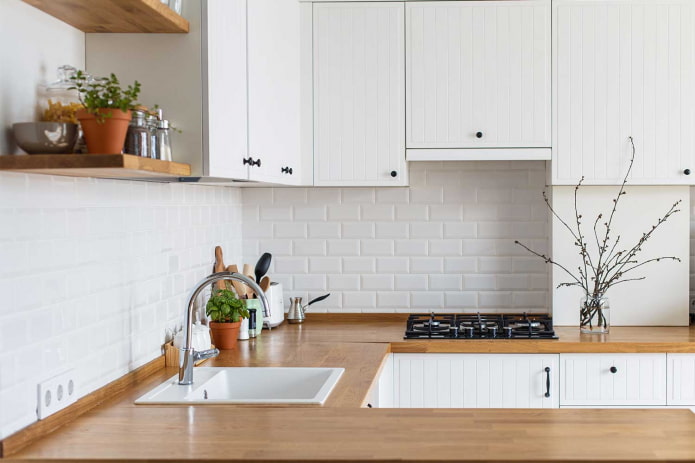
 10 practical tips for arranging a small kitchen in the country
10 practical tips for arranging a small kitchen in the country
 12 simple ideas for a small garden that will make it visually spacious
12 simple ideas for a small garden that will make it visually spacious

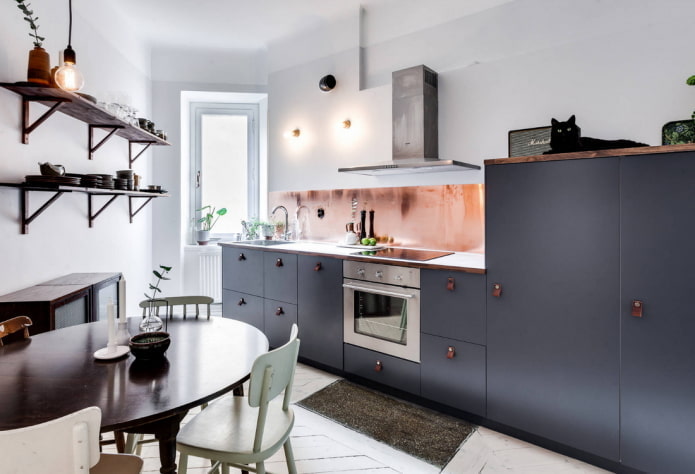
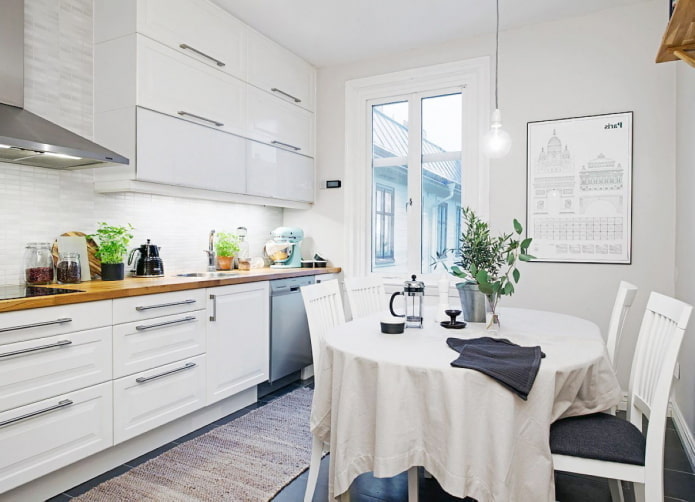
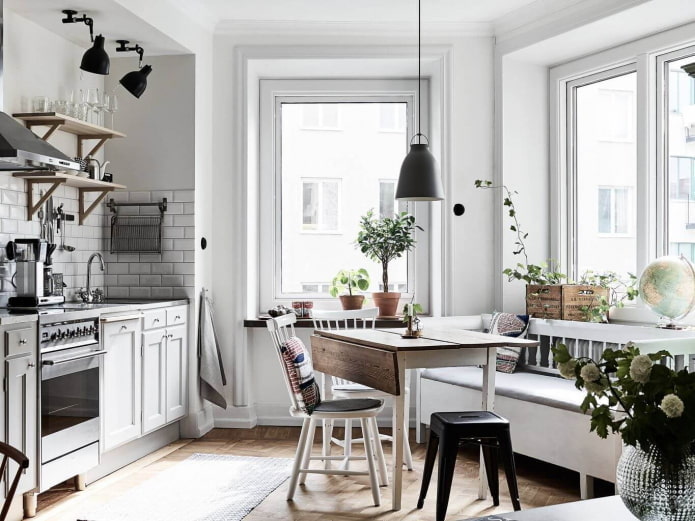
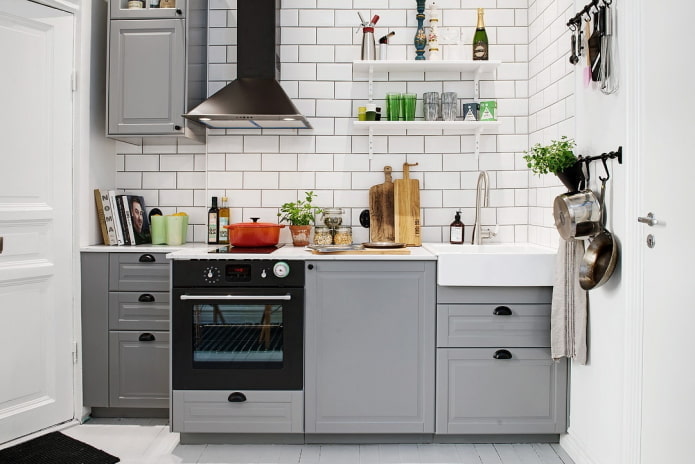
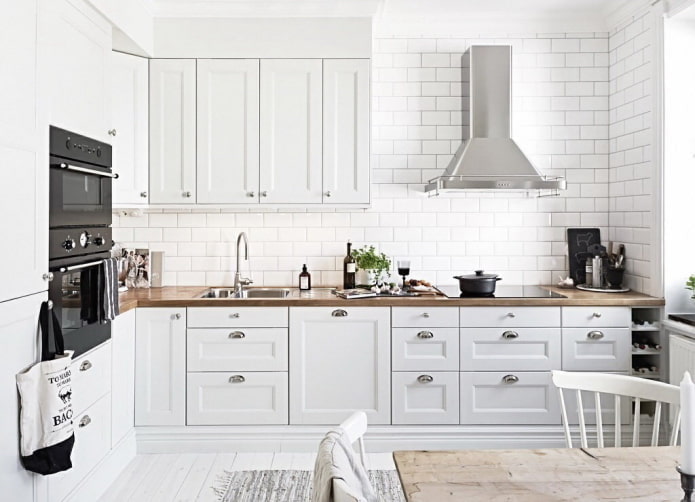
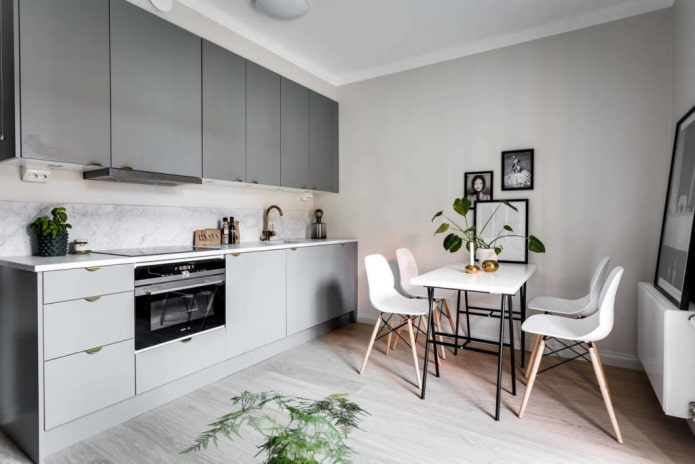
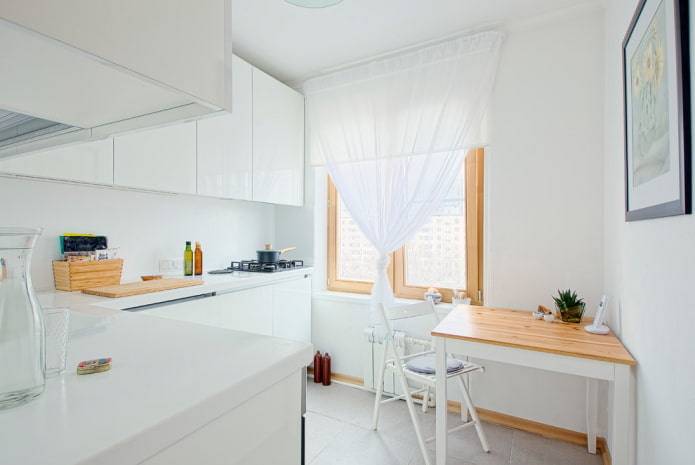
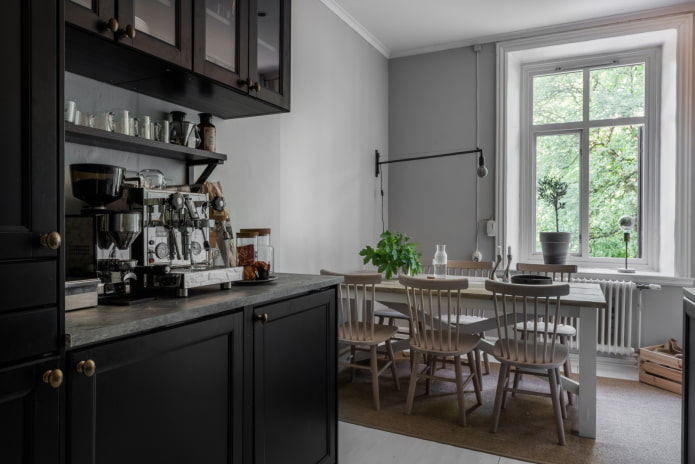
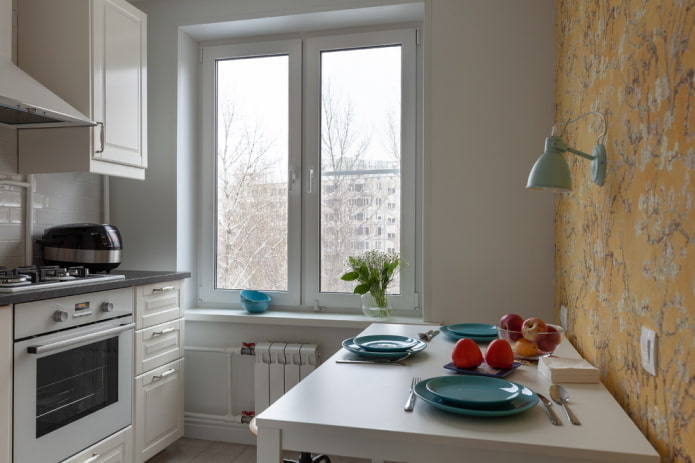
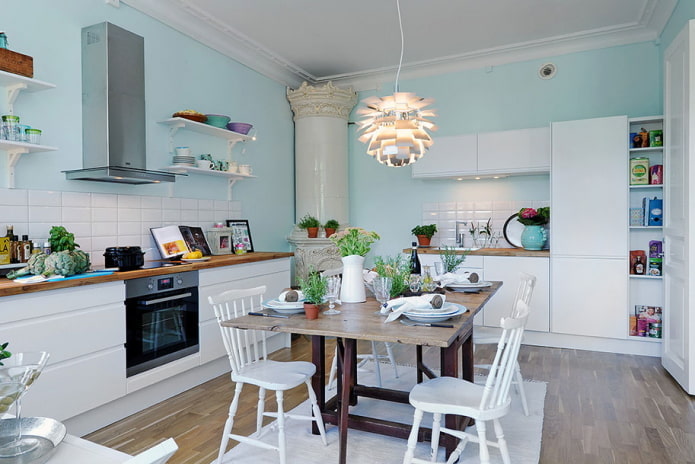
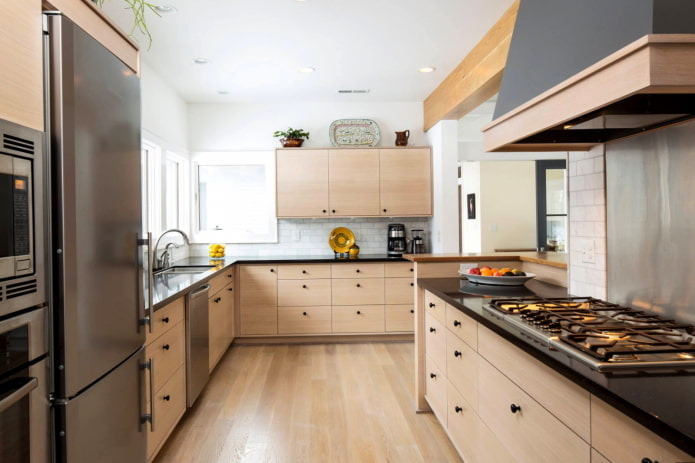
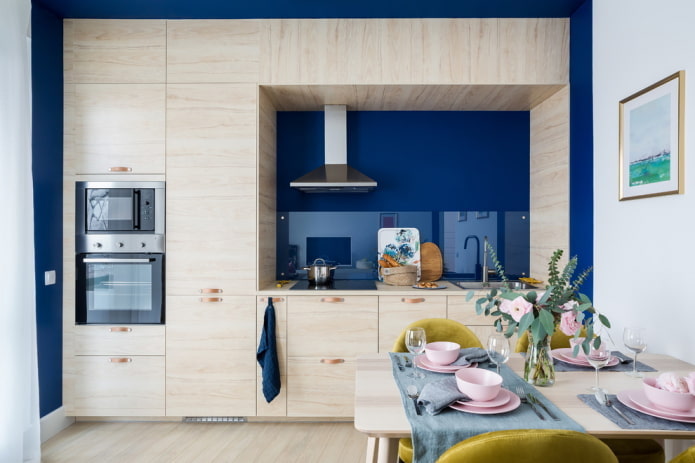
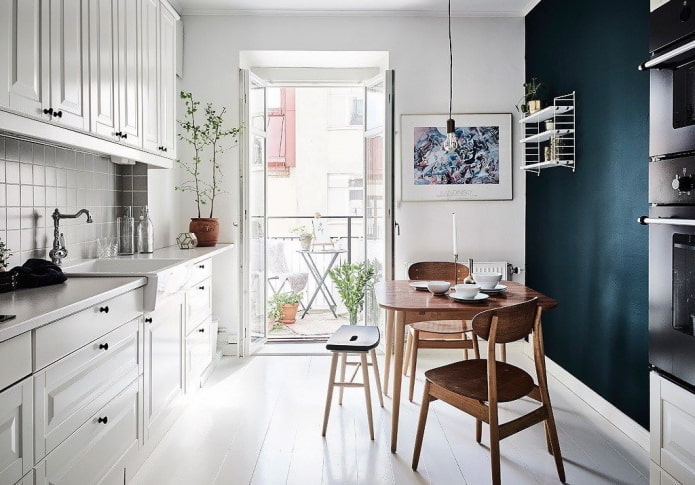
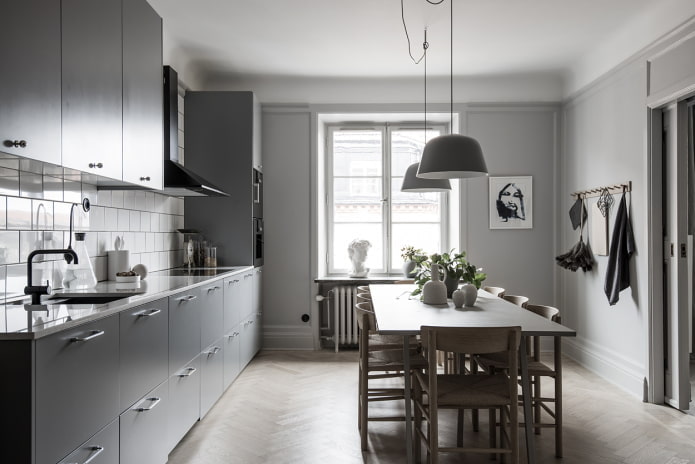

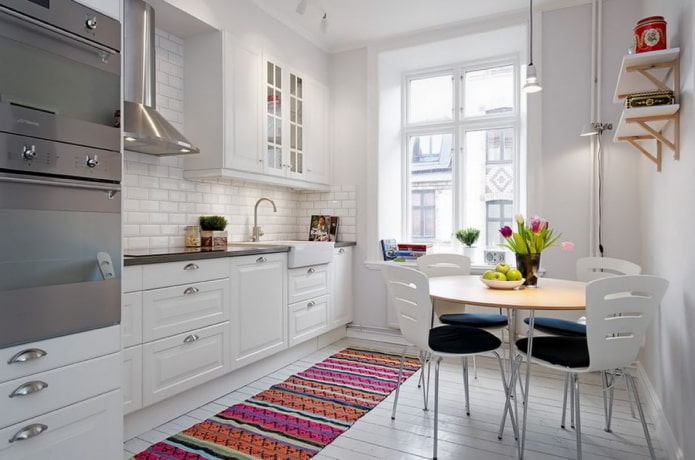
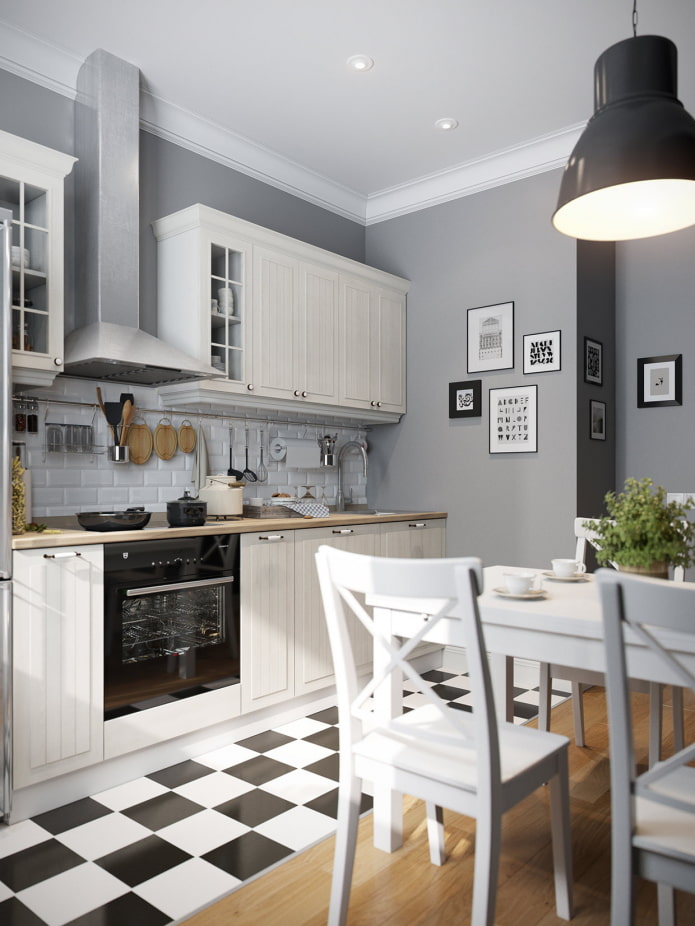
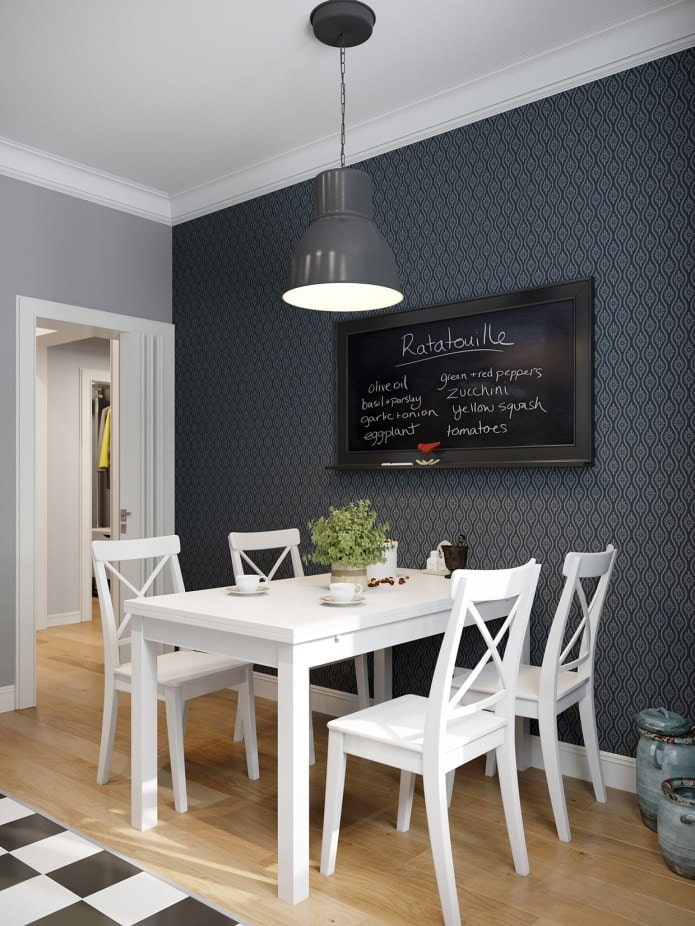

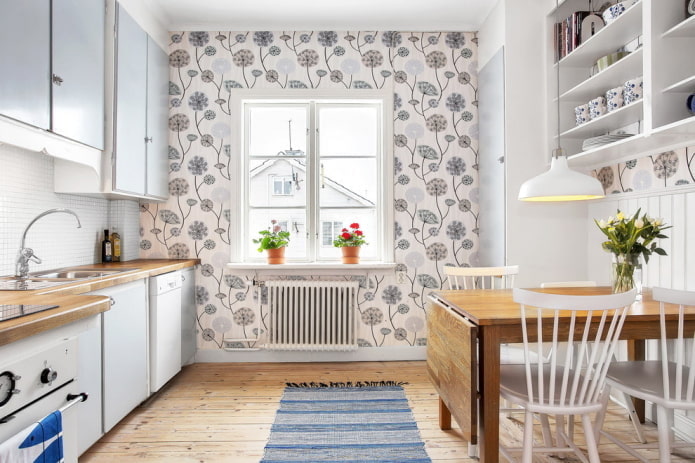
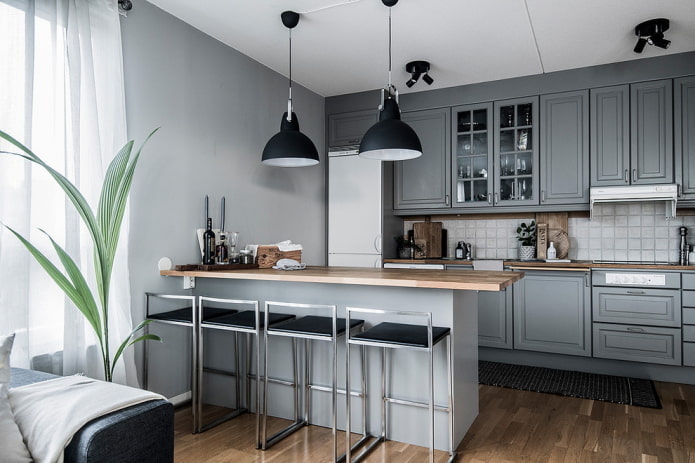
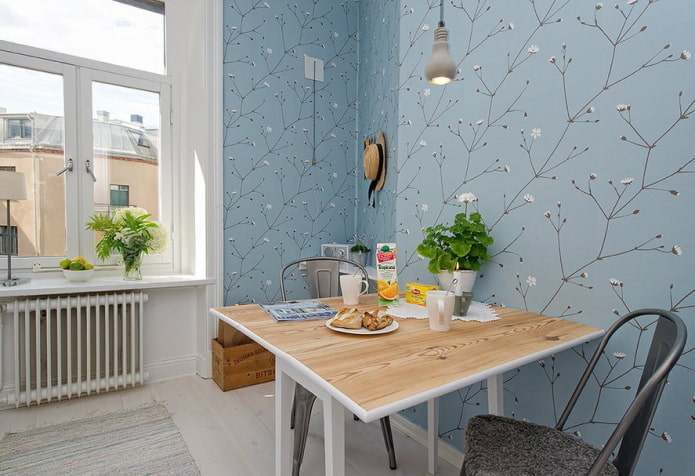
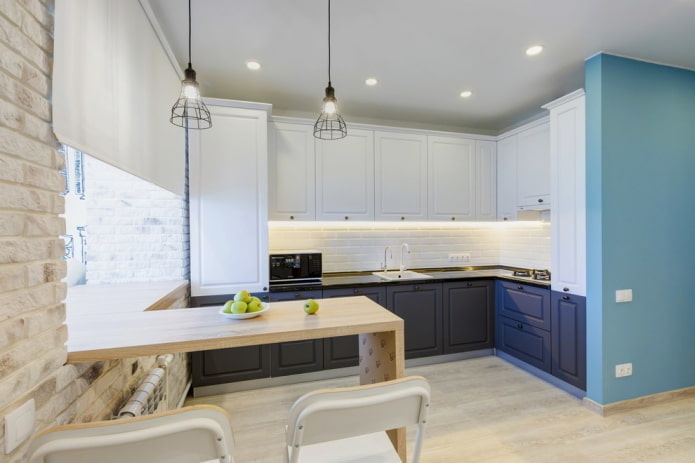

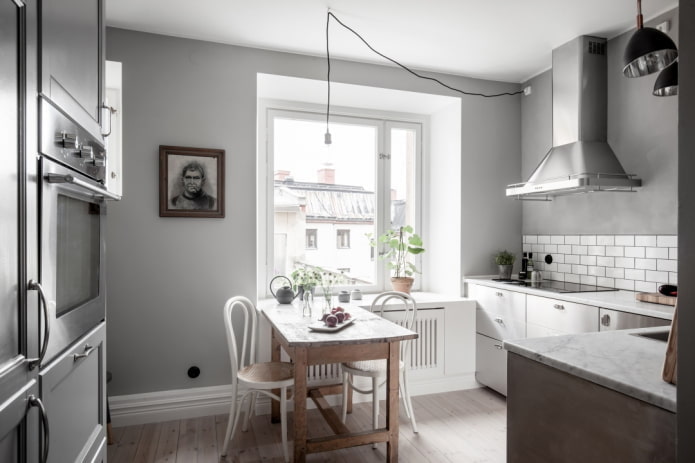
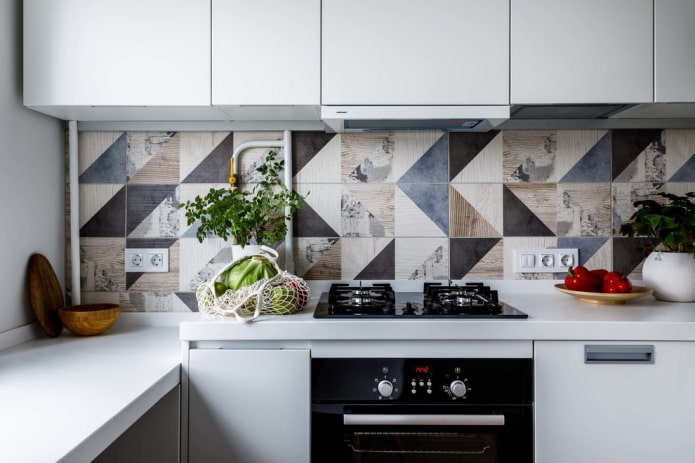
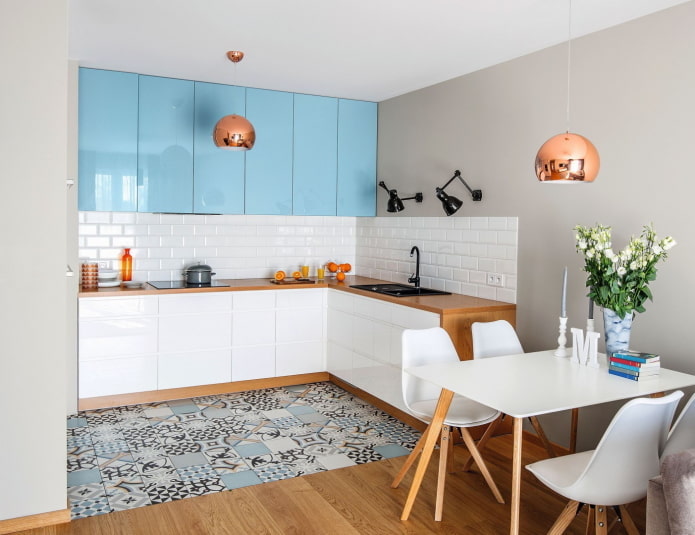


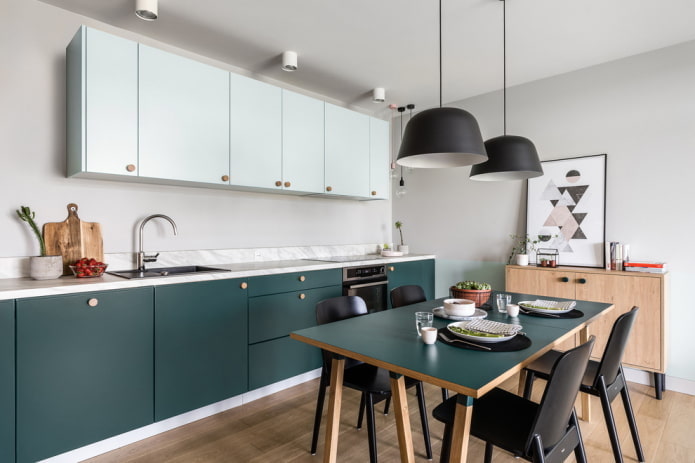
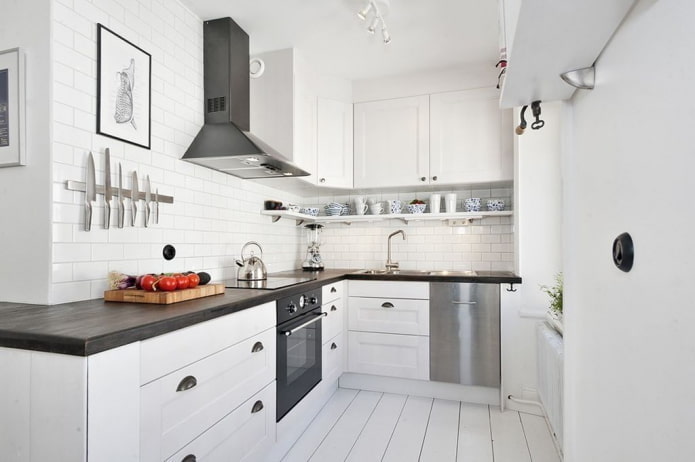
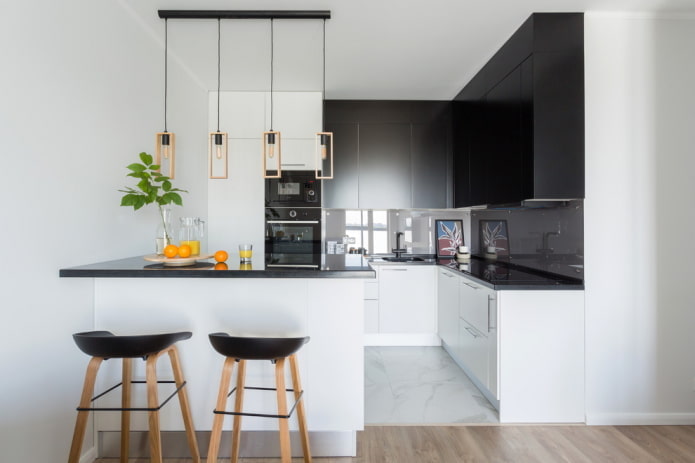
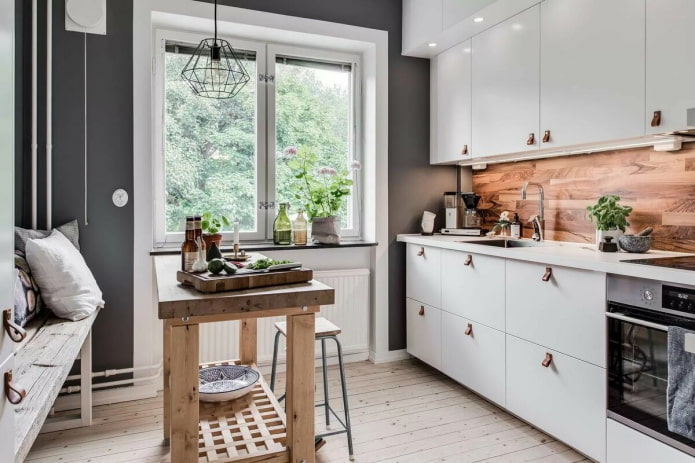

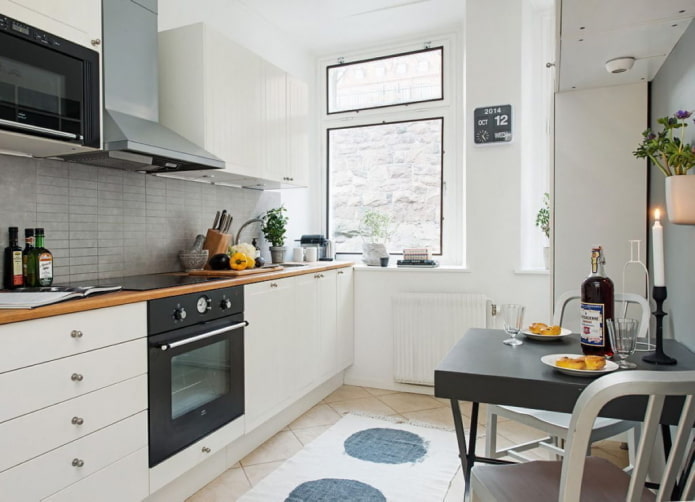
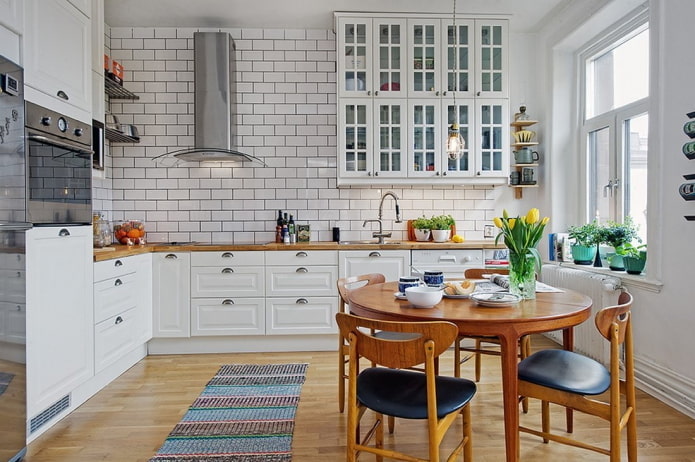

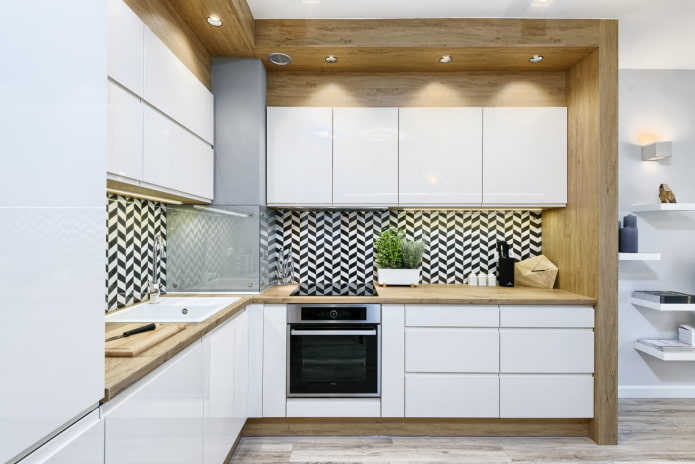
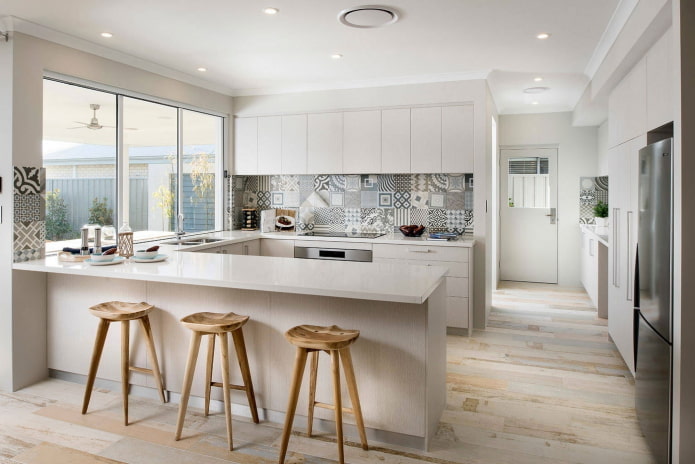
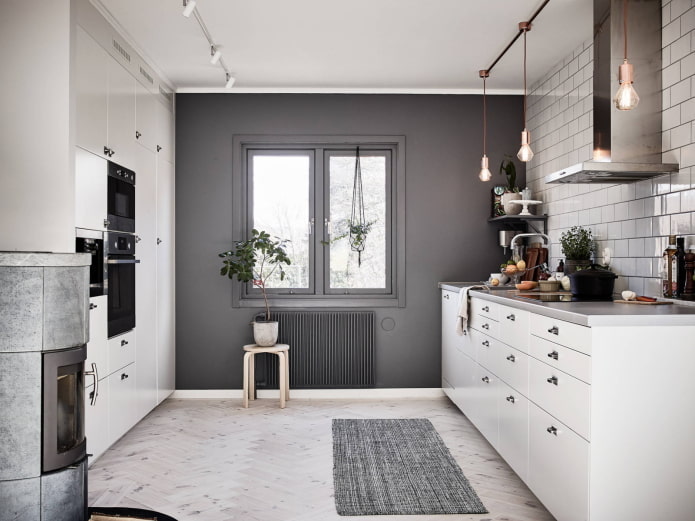
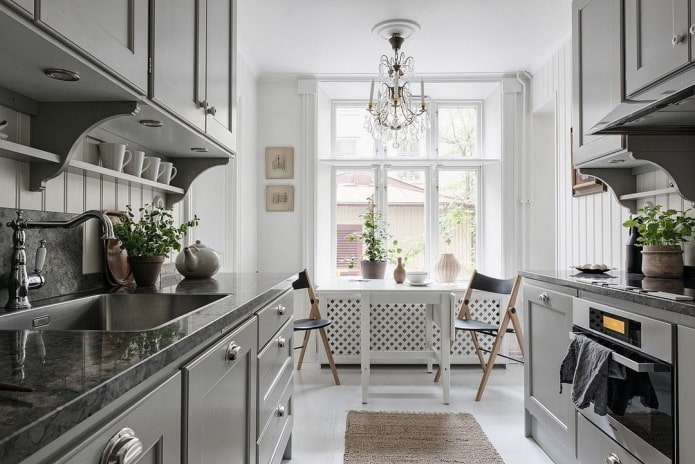
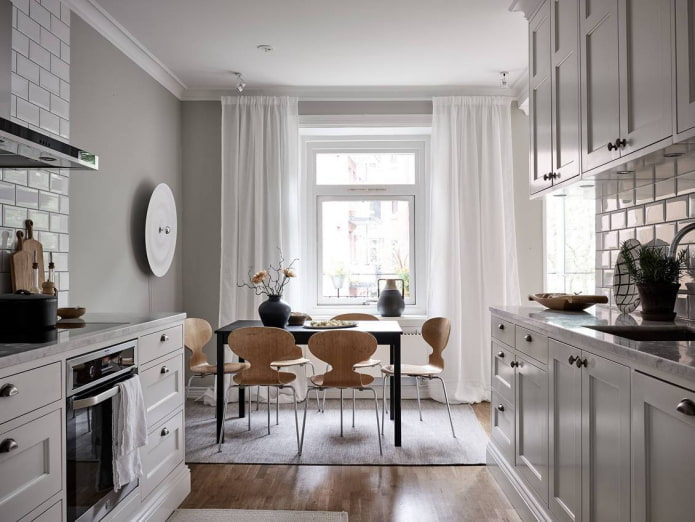

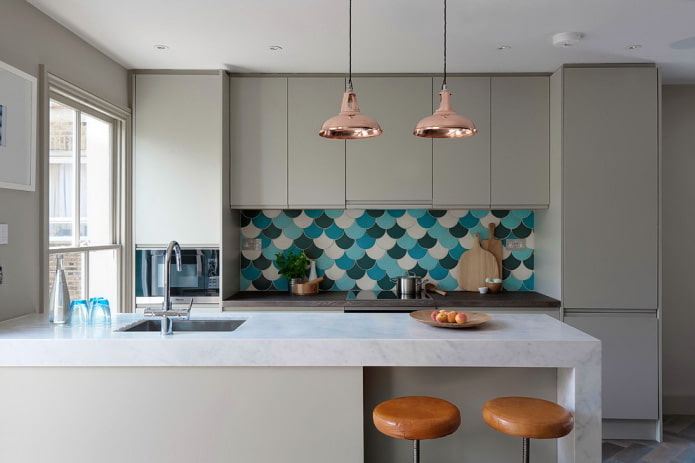
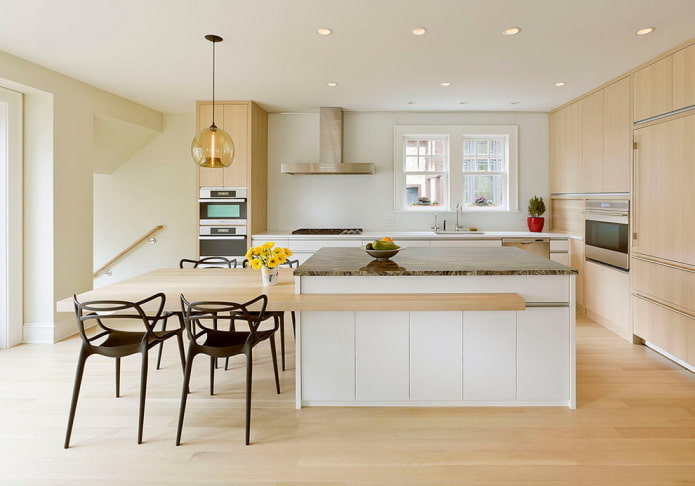
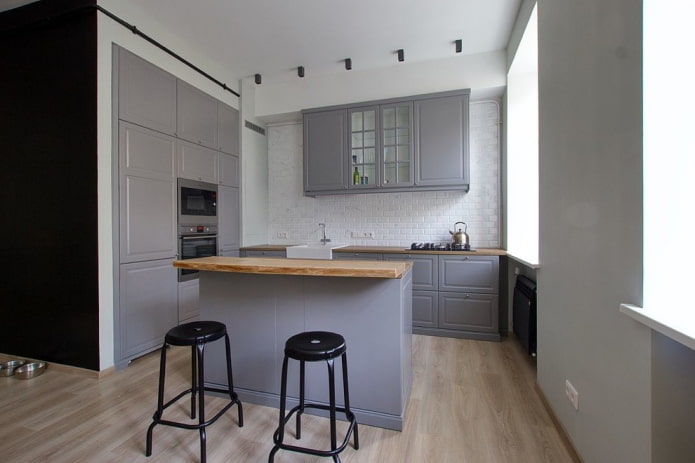
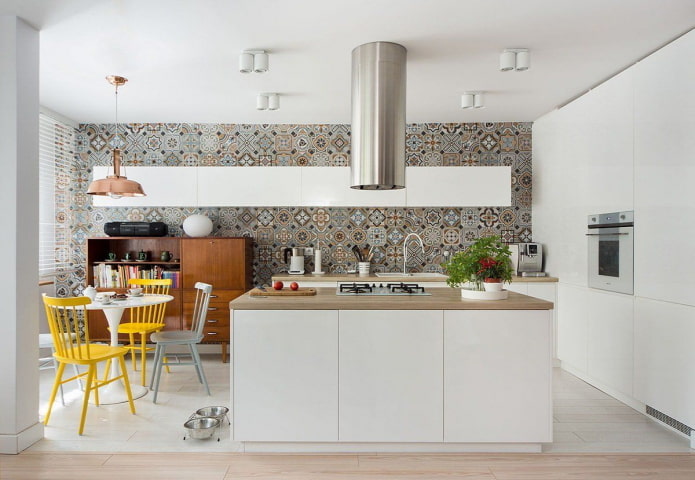
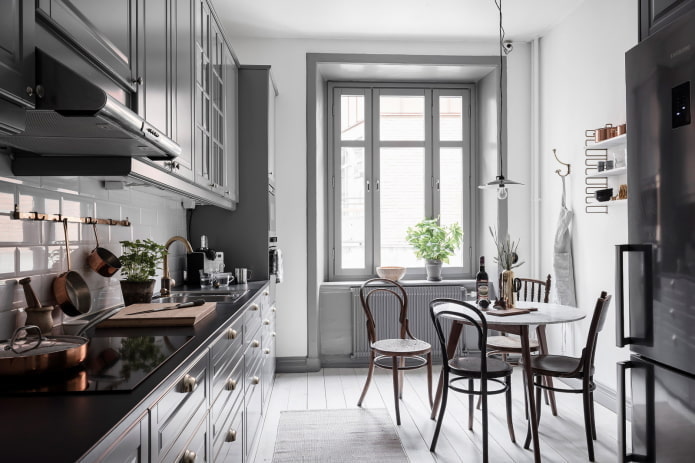
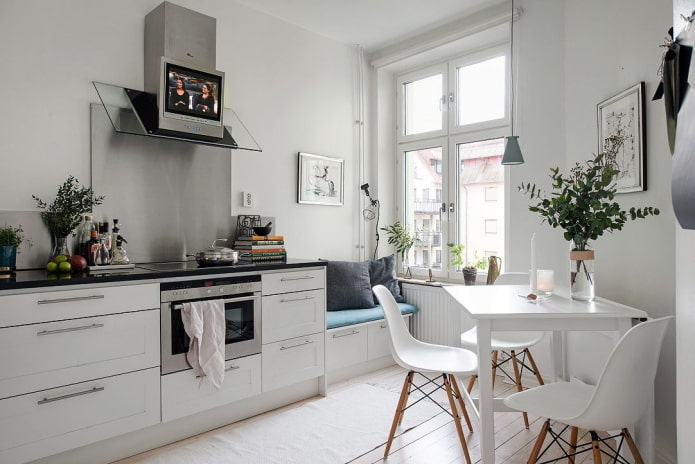
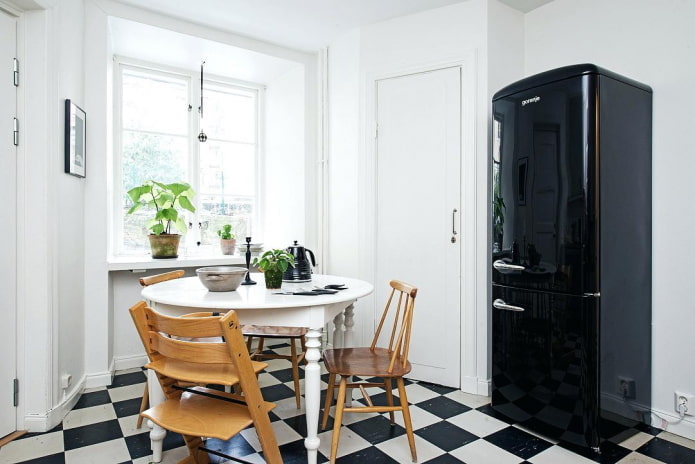
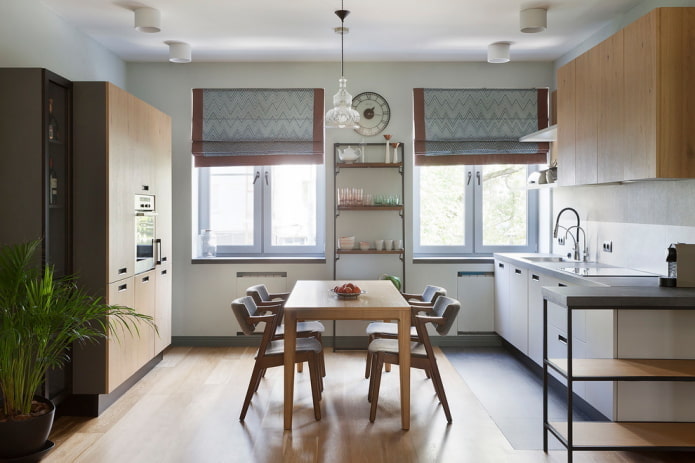
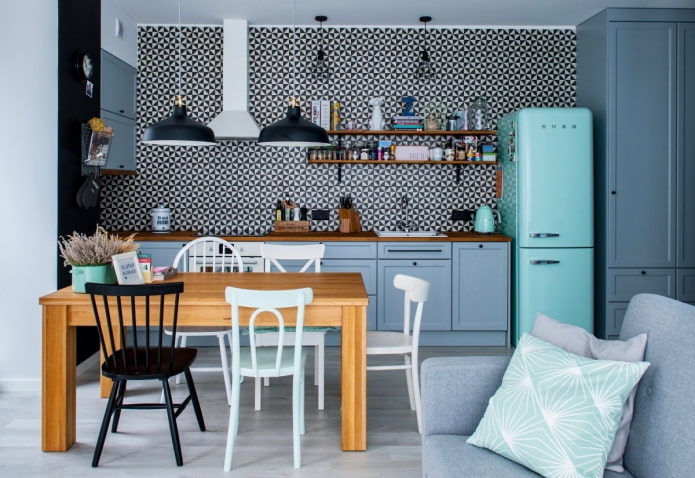
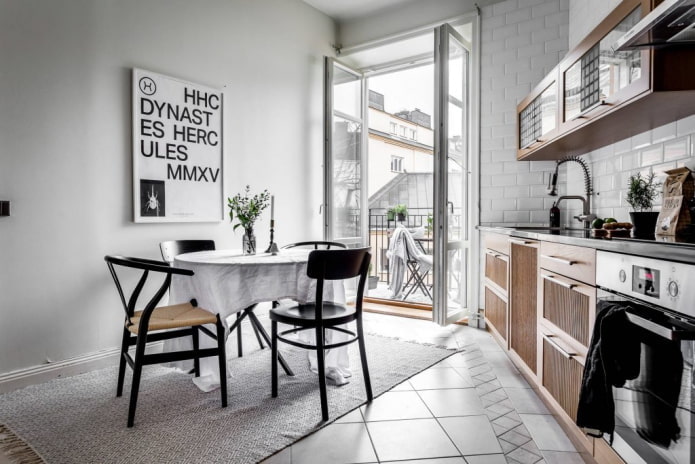
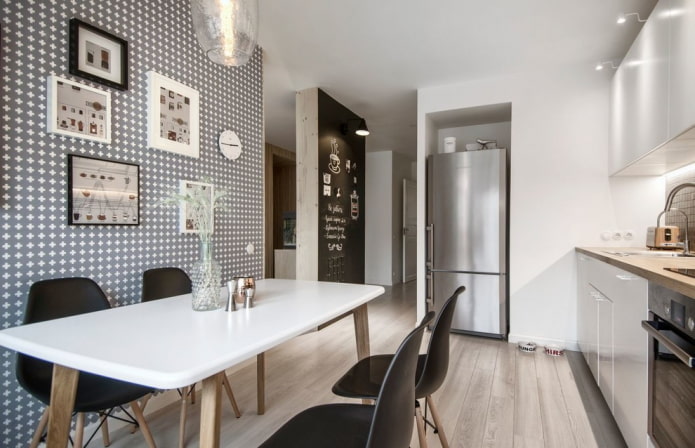
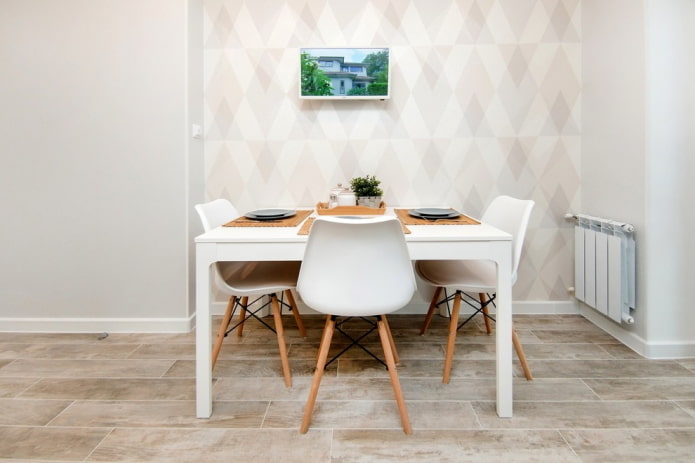

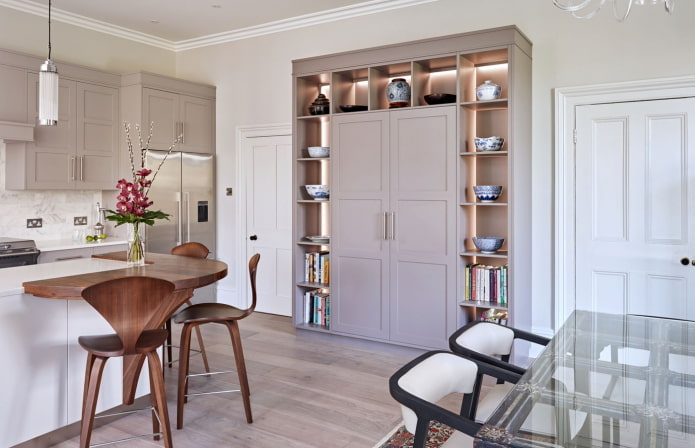
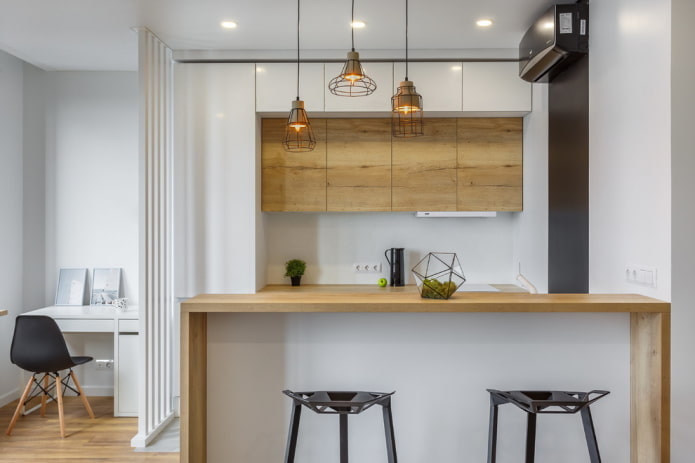
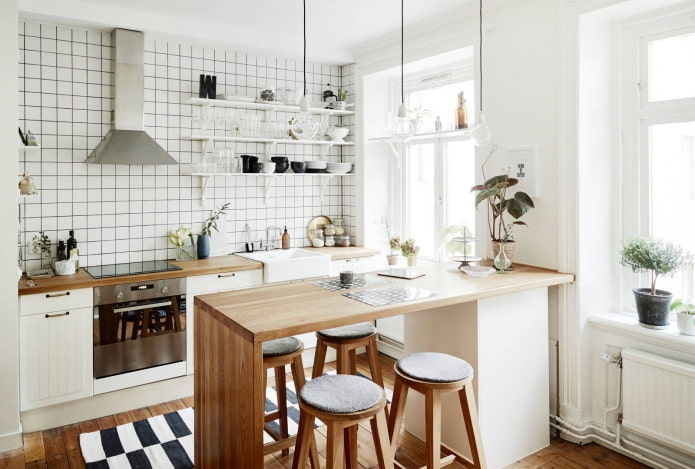
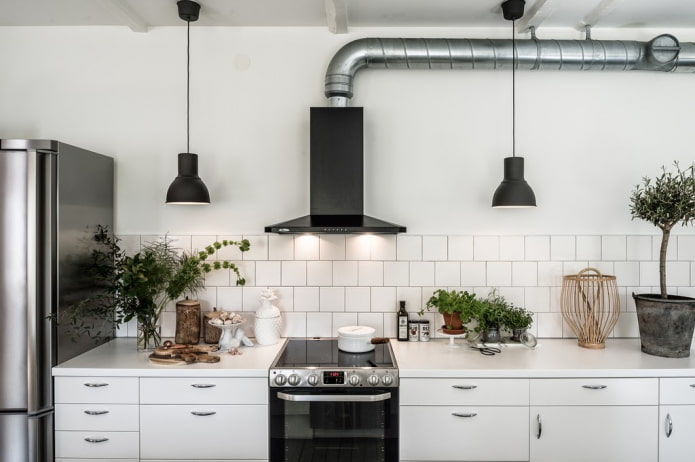
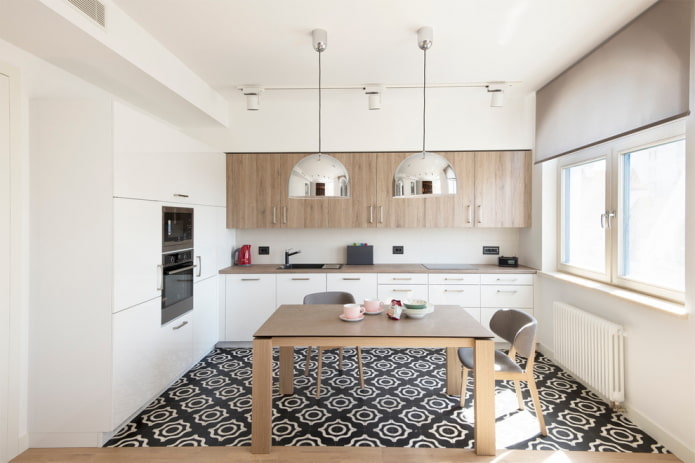
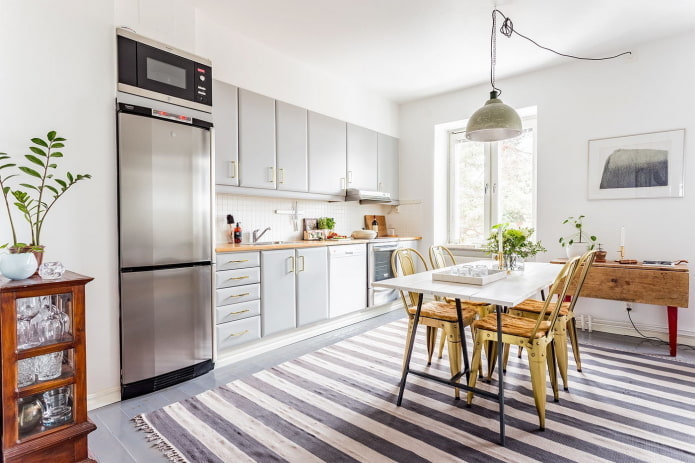

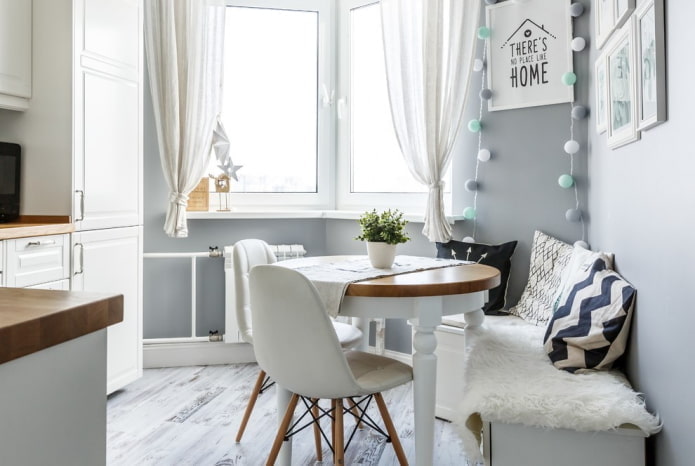
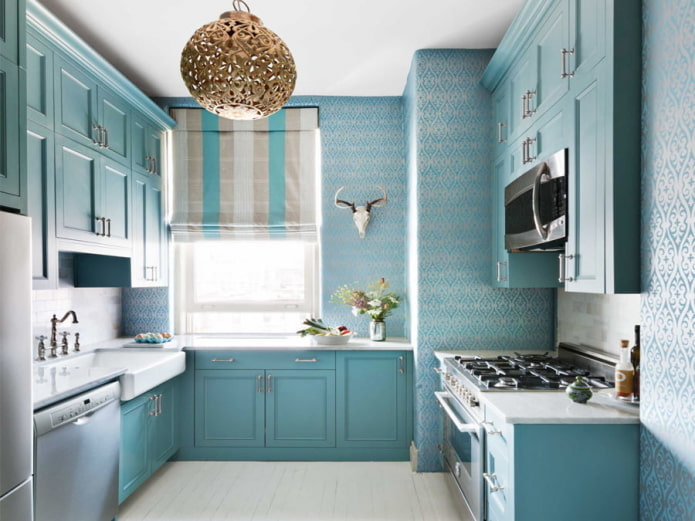
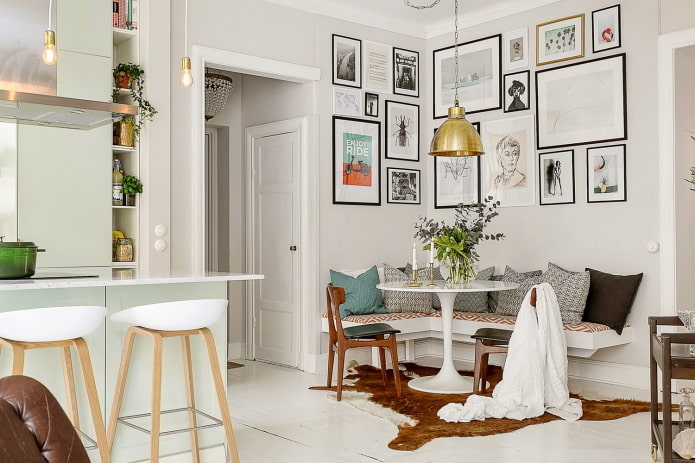

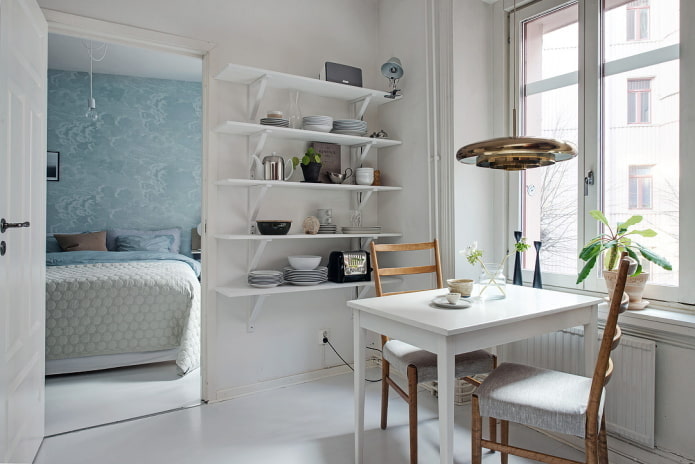
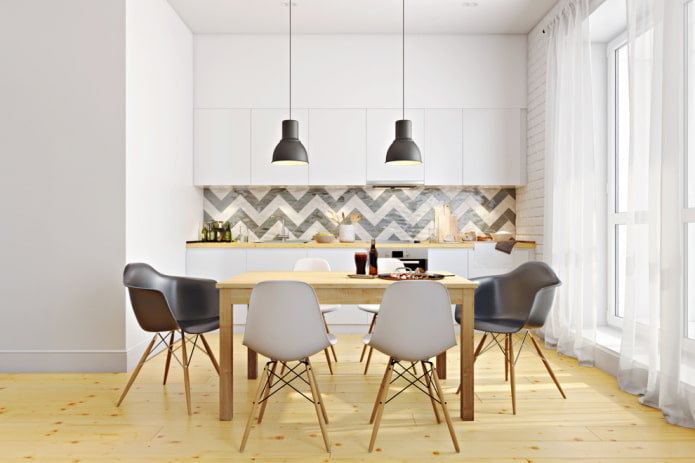
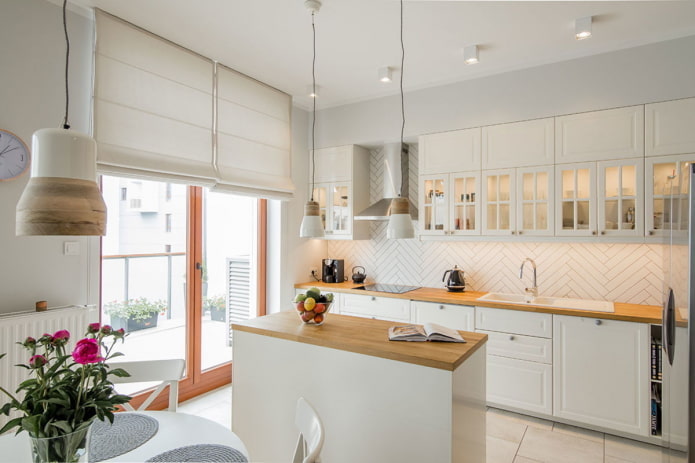

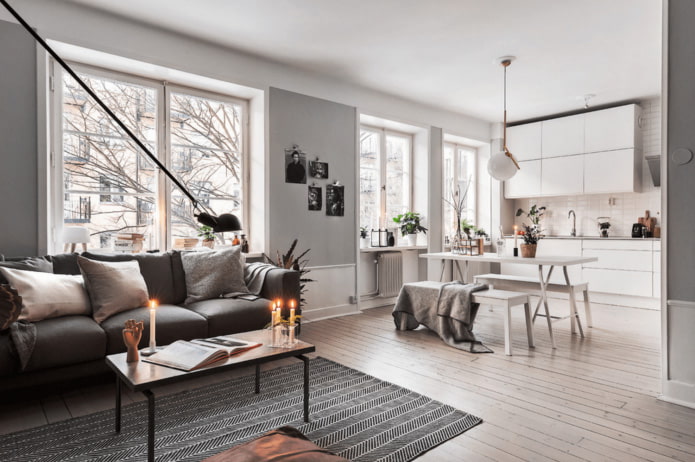
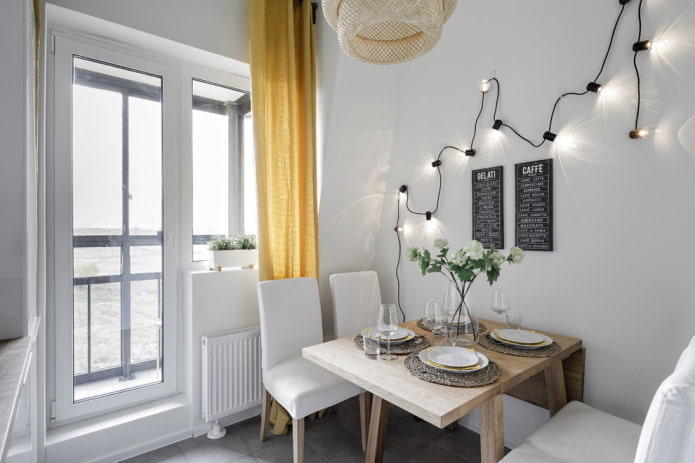
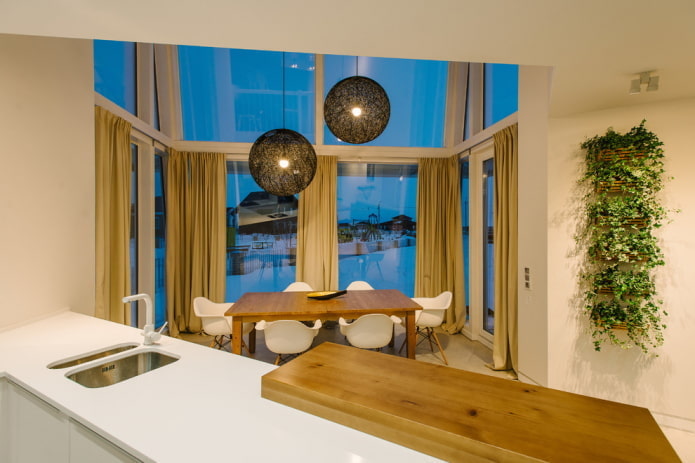
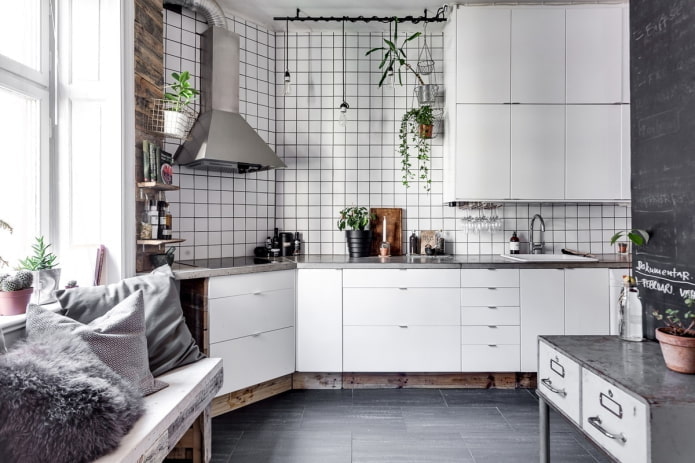
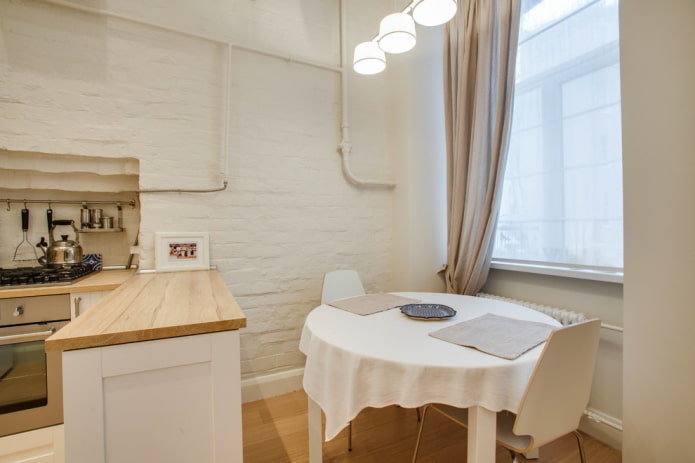
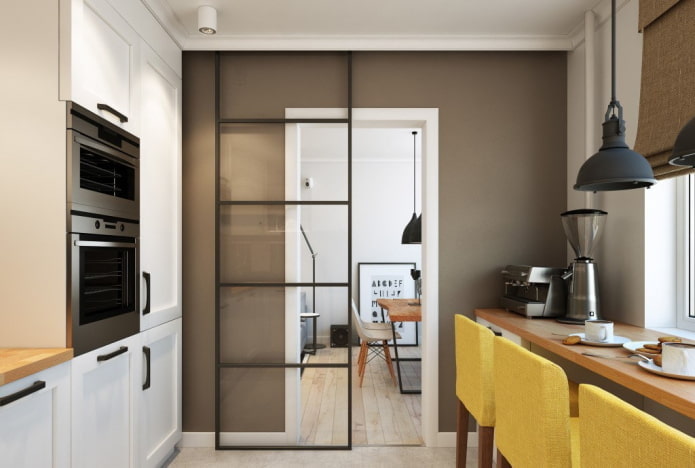
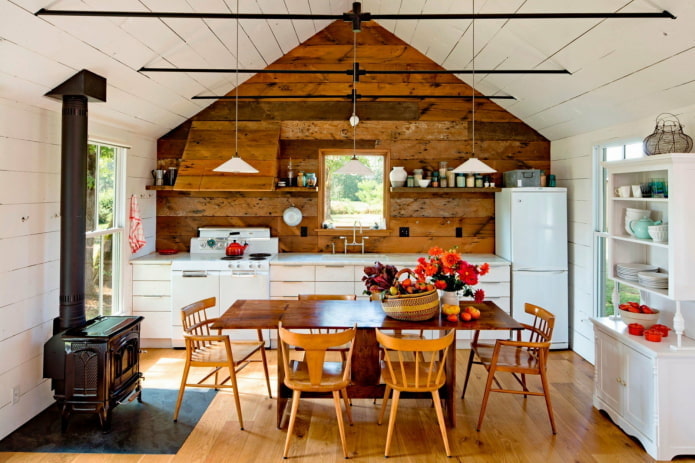
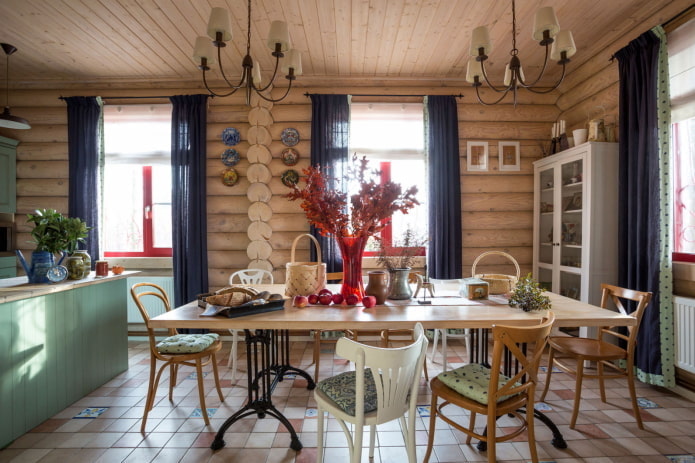


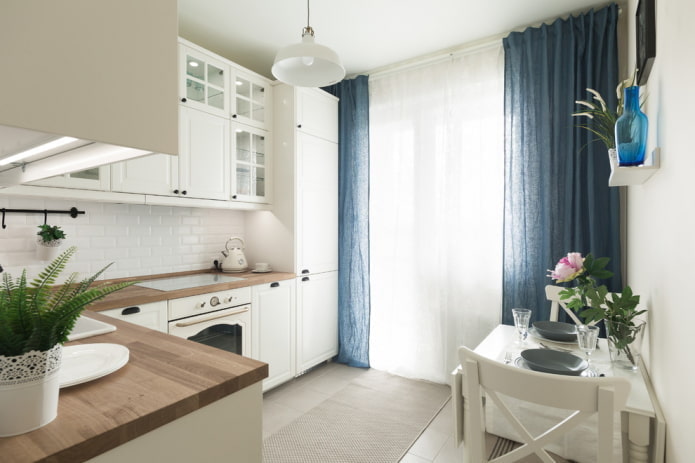

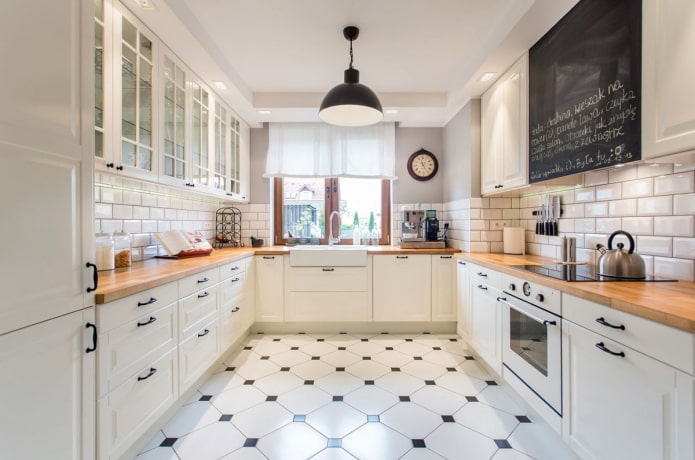
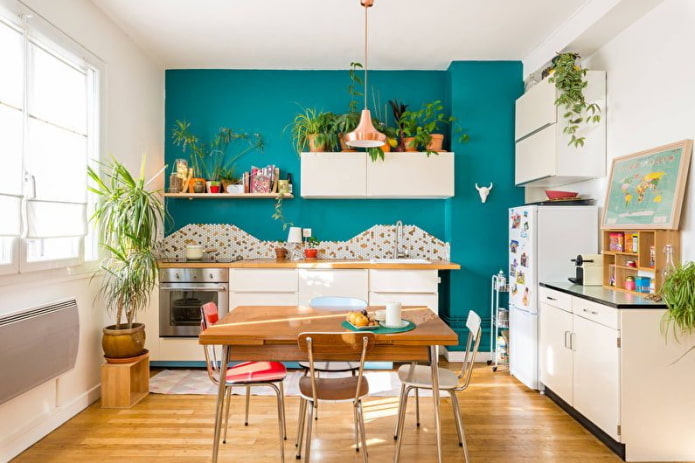
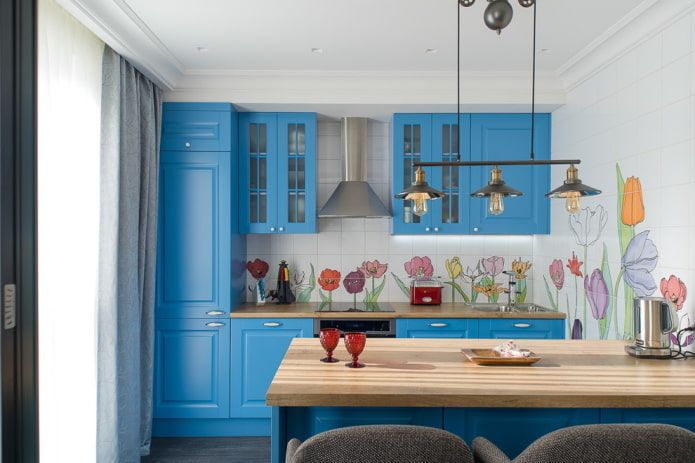
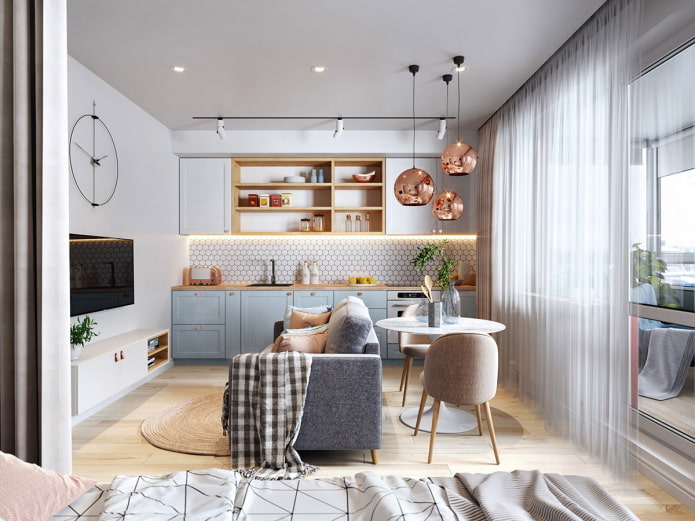
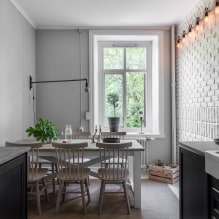

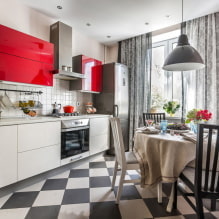

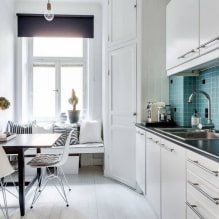
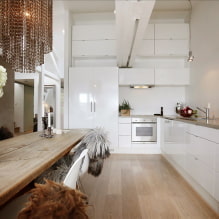
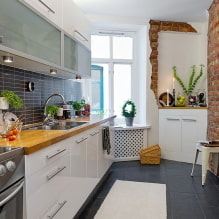


 How to choose the color of your kitchen sink?
How to choose the color of your kitchen sink? White kitchen set: features of choice, combination, 70 photos in the interior
White kitchen set: features of choice, combination, 70 photos in the interior Black set in the interior in the kitchen: design, choice of wallpaper, 90 photos
Black set in the interior in the kitchen: design, choice of wallpaper, 90 photos How to choose curtains for the kitchen and not regret it? - we understand all the nuances
How to choose curtains for the kitchen and not regret it? - we understand all the nuances Design of a white kitchen with a black countertop: 80 best ideas, photos in the interior
Design of a white kitchen with a black countertop: 80 best ideas, photos in the interior Kitchen design with green wallpaper: 55 modern photos in the interior
Kitchen design with green wallpaper: 55 modern photos in the interior